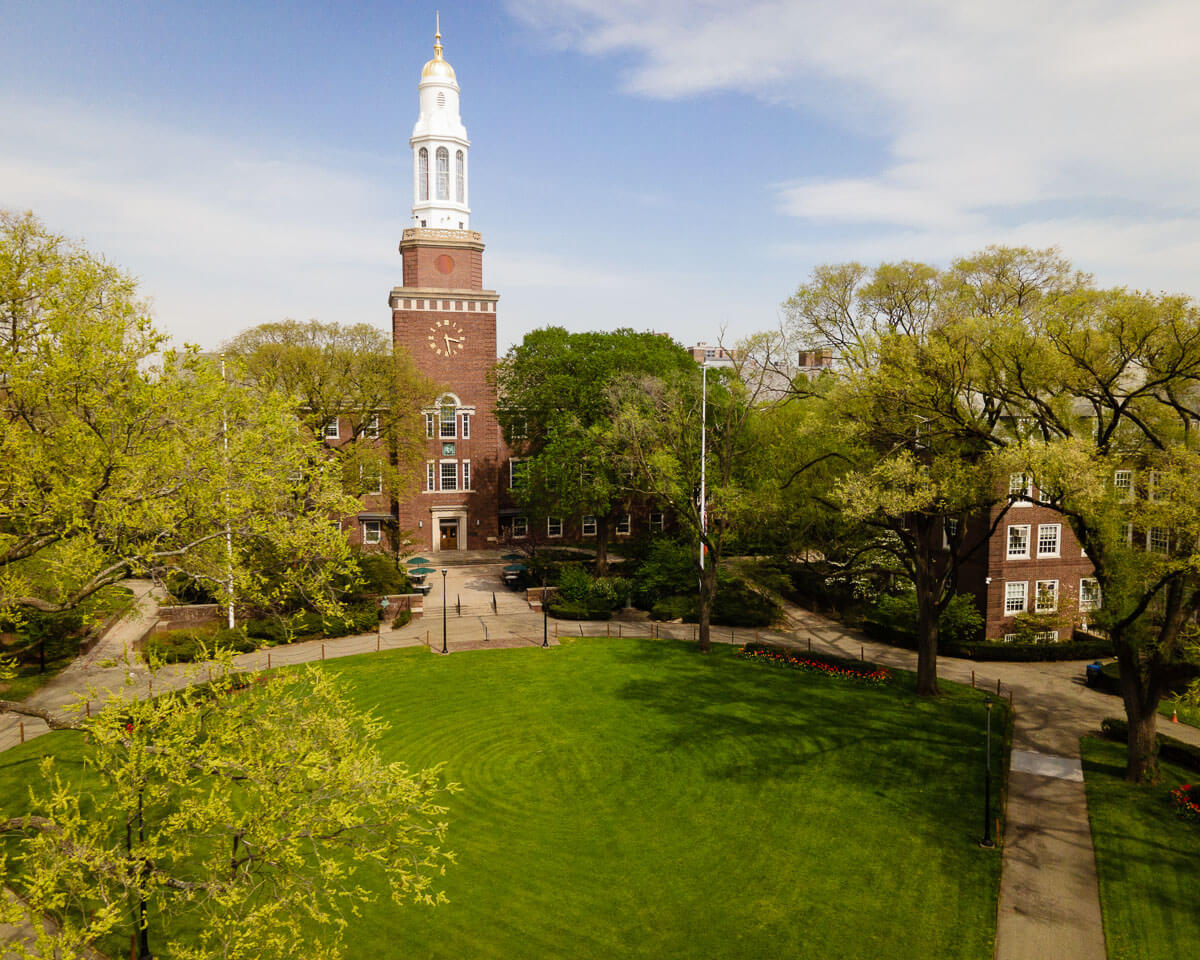When the pandemic hit, Carlos A. Cruz ’00, whose job providing technical support for online courses became one of the most critical on campus, took it all in stride.
It was somewhat accidental that Carlos A. Cruz ’00 ended up at Brooklyn College for more than 20 years. The Cuban-born multimedia instructional designer came to New York City after earning degrees in art and anthropology in Cuba and Mexico. He figured he’d work in the art world and had enrolled in a master’s degree program in computer art design at Brooklyn College when he was asked to work on a historical encyclopedia project for the Puerto Rican and Latino Studies Department. They needed someone with technical expertise, and Cruz’s background in design, Cuban art, and history made him a shoo-in. After working on that project and graduating with his degree, he transitioned to his current role, in which he provides instructional support and trains faculty members on using Blackboard and other multimedia platforms now in hyper demand.
BC: Talk about a job that changed pace overnight! When you first started in this position there were maybe 20 courses using Blackboard to teach online courses. Thanks to COVID-19, the majority of our courses now have some online component, and you are the main IT support for those courses. How has that been?
CC: Before the pandemic, we had three departments that were fully on board with Blackboard—by that, I mean using it or planning to use it often or in the process of putting a fair amount of classes online. So when the pandemic hit, there were so few people on campus who knew how to use it. When the university moved to online mode, we had to train everyone from the beginning. For those first months, I was conducting workshops four times a day.
One thing that made it a little easier on me was that the Brooklyn College community became very strong at sharing their knowledge thanks to the Center for Teaching and Learning and the Academic Information Technologies group. We created support groups that also helped to answer a lot of questions for students and faculty members, and that was a very important part of the transition.
But it was definitely crazy for a while. Some days I had as many as 200 questions in my queue. I just had to be calm and ready to deal with people’s frustrations. The work I am doing includes high-level customer service, among other skills. We receive a question, search for the possible answers, discuss the alternative solutions with the instructor, and suggest the option that will work better technically and pedagogically for each case.
BC: How did you end up in your current position?
CC: My job with the encyclopedia project was ending and I was looking. This position was open and I applied. I didn’t know it at first, but through this job, I realized how much I love helping people. It’s the kind of thing you never realize until you start doing it. I’ve been spending my life helping people, and it’s a good feeling sharing my knowledge.
BC: But your original passion is art and specifically Cuban art.
CC: Yes, I was born and raised in Cuba, my major in college was art history, and I worked for 10 years for the Ministry of Culture. I still spend a lot of time in museums when I can. I like the Museum of Modern Art and the Metropolitan Museum of Art. I recently went to Philadelphia to see a Jasper Johns exhibit.
I have been working on a big personal project for three decades—a chronology of international recognitions received by Cuban artists from 1889 to the present. It is an interactive database for art specialists, students, art collectors, and art lovers. It includes all art manifestations: painting, printmaking, sculpture, performance, design, cartoon, architecture, and photography. The final version is not ready yet, but it will be my first goal when retirement comes.
BC: What are some of your other favorite pasttimes?
CC: I like to go to flea markets to look for nice stuff. I love to be social, to be with friends. It’s part of what I loved about Brooklyn College from the start. There’s a community here. People make time to spend with friends, to stop by your office and say hello, even if they only have five minutes.
I love what I do here. I feel useful. We do a good job of proving that nothing is too difficult if we work together.



